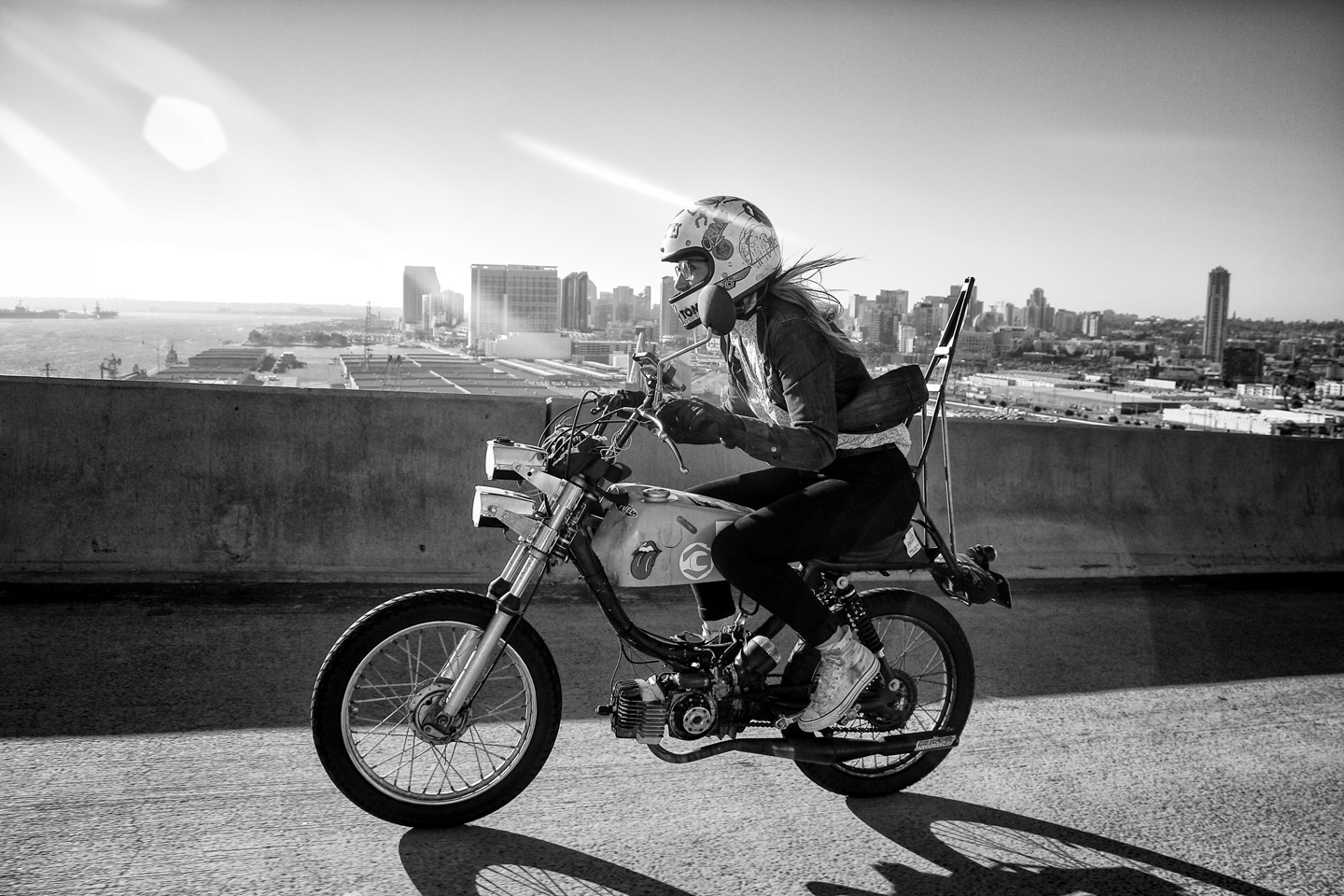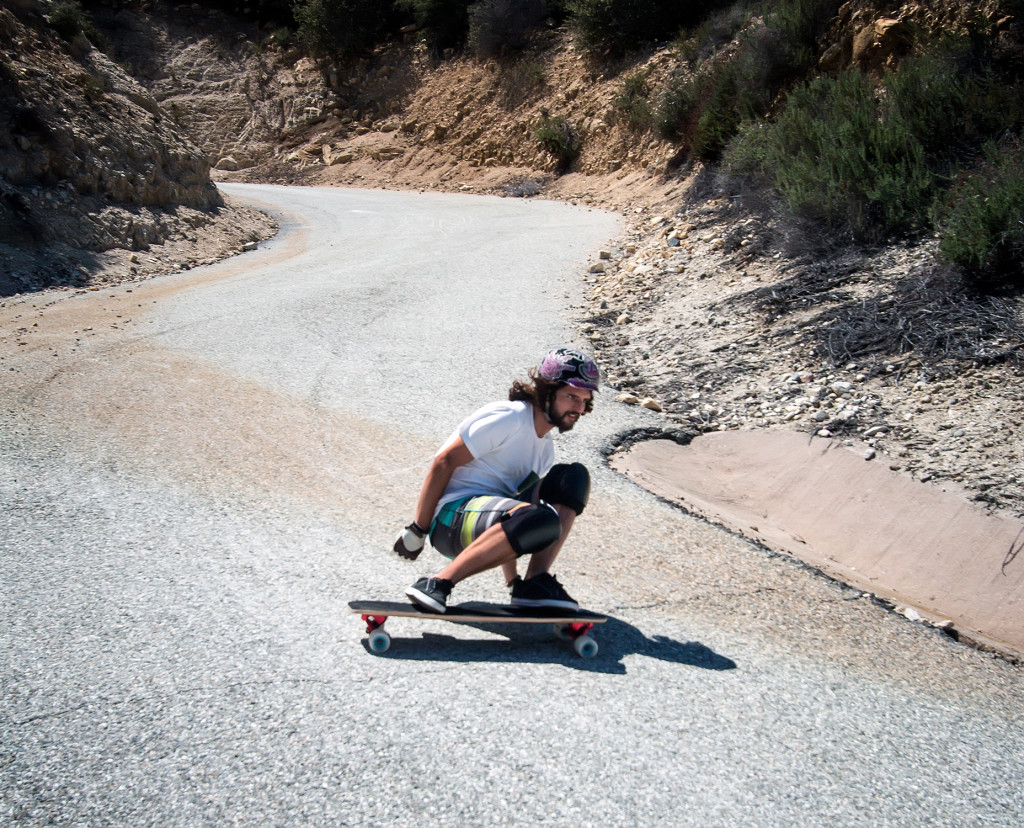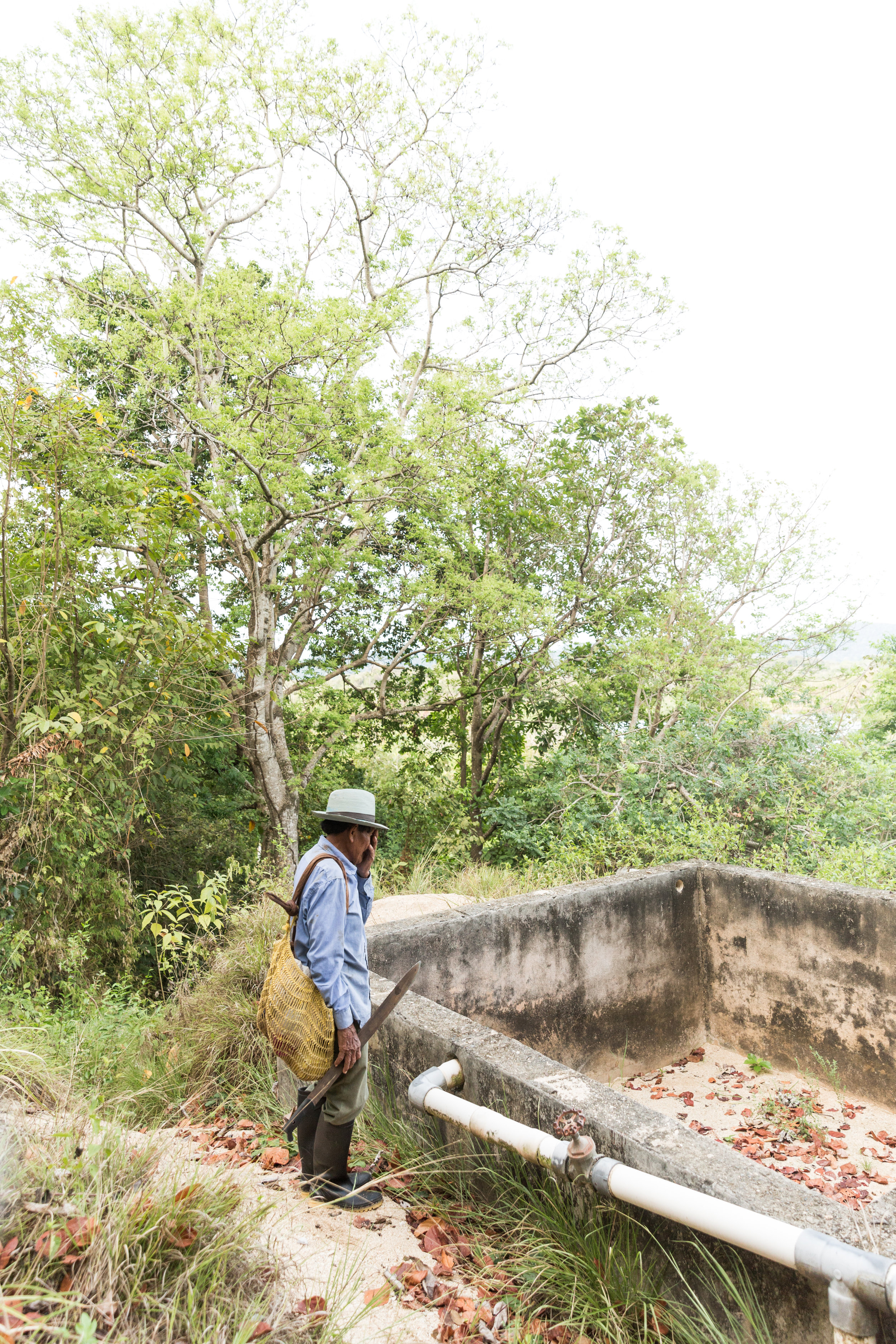Live Fast Die Slow
Stay Wild
“Officially, it’s not a race,” says James as he yawns. We’re on an all-night drive to Seattle from L.A. in a rental van. It’s just before dawn. We’re on our way to the starting line of the Pinball Run, an epic endurance challenge spanning 1,800 miles of coastline roads from Seattle to the Mexico border. James takes a swig from an enormous energy drink and tries to make himself comfortable behind the steering wheel. He laughs a tired laugh. “But really, who’s spending two hours on the side of the road swapping an engine if it’s not a race?”
The Pinball Run is in its third year as James and I drive northbound. Like other endurance challenges, it involves roadside fixes, mechanical know-how, and a chase team. There’s a start line each morning and teams have 24 hours to make it to the day’s finish line. But unlike its big brother, the legendary Gumball, the Pinball is strictly mopeds-only. Slow, noisy, pedal-powered mopeds, 99 ccs and under. The rickety moped strapped in the back seat is James’s hopeful winner, set to compete against 19 others. It’s a Tomos LX, dingy-faded blue and dented. 1,800 miles, eight days, 42 mph. If you think that sounds crazy, it is.
“Chances are, you’re going to fail,” he says. He’s right. Mopeds are not known for their reliability, and per the rules of the race, you must repair your bike where it stops. In past races, support teams have brought extra engines, tires, carbs and plenty of tools. The event attracts the weekend wrencher — someone who knows two-stroke engines top to bottom. Some teams custom-fabricate parts or do secret mods. Preparation is months in the making and competition is friendly but heated.
“What’s the difference between your support team this year versus last year?” I ask. “That I don’t have one,” he laughs. This will be James’s second Pinball, but it will be his first race solo. “My team had to back out last minute. I decided I needed to do this one myself.”
Mopeds have a sort of loyal following that has created a close network of friends — a family of sorts through which we have gained and lost dear friends. “David got me into mopeds. He loved to ride ...” James muses. He has a boyish face. Small scars web across his lip and chin. “One night we were stopped at an intersection on our bikes,” he continues. “Light turns green, lady runs a red, nails us both. Hit and run.” David died instantly. James was left for dead.
After the accident, what was left of James’s and David’s bikes were left in a box. After some time healing, James dusted off the parts and began to build them into a new bike, a tribute to his friend. “I scavenged everything that was sentimental. The tank is all dented. I took some bolts from the shocks. I even went back to the scene of the accident and got little bits of mirror, washers … whatever I could find.” He rebuilt the bike strapped in behind us piece by piece. The remaining spare parts he’ll carry with him for roadside fixes. “The bike’s motor from that accident actually survived. That’s my backup motor. It’ll be my secret weapon.”
In Seattle, we meet the other competitors prepping bikes. Many have mods for comfort or convenience like two gas tanks or sissy bars. Eleven teams have converged from as far away as Boston. Support teams are also arriving with chase vehicles that range from a 2-door hatchback to a ‘90s prom limo. “In the end,” says a racer as he changes the limo’s brakes, “we did the math and renting a camper cost the same as buying this limo. It was an obvious choice.”
The limo has style, but the camper may have kept them more comfortable since the eight-day challenge includes several nights of camping. One team outfitted a school bus with bunks and a portable shop. Matt and Mike rented a Penske moving van, Jake and Ashlee are using a Prius. James negotiates space for his extra parts amongst the other teams.“I’d do anything for that guy,” says Jake, another racer. “If I had to turn around and drive 30 miles to bring him gas, I would.”
Pinball is informally organized. It’s self-sanctioned and there are no sponsors. There is a daily starting line and finish line, and each team’s time is recorded and added cumulatively. Each team will strategize their best route. Since the bikes are small and slow, every extra mile counts. Racers are also required to run an app which tracks location and speed. There’s a modest purse at the finish line and some trophies, but that’s all. If you’re here, it’s because you love to ride.
The next morning, 19 hopeful bikes gather at the starting line. The race starts with the wave of a flag and the small crowd cheers. Today’s ride will end in Portland. The bikes slowly inch away from each other as navigation strategies are put into play. Of the 19 that started, only 15 make it to Portland that afternoon, removing four from the competition. Along the way, those who receive a DNF (Did Not Finish) pack up their bikes and continue to follow the caravan. Some continue the daily rides as non-competitors. “Even if we don’t win, I just want to say that we went all the way,” says Ashlee, looking defeated next to a bike in pieces. She and teammate Jake accept a DNF on day four. “We’ll replace the transmission tomorrow and keep riding. We’re just out of the race.”
Days one and two see James competing strong. He manages to make the top seven each day and his spirits are high. After day three, his chances begin to fade. His position isn’t improving and his speeds are low. On top of this, he finds himself in the middle of a controversy over some interstate travel, earning him a penalty and possible disqualification. “I don’t care, I’m doing this for the memory of my friend.” He musters some determination. “I”m not giving up.” He’s frustrated and trying everything to inch forward in the race, even creating temporary cardboard fairings to cut down on his wind resistance.
Day five is the toughest day for James. Engine problems plague him all day. Tensions are riding high with him and a team that wants him disqualified. It’s a low point for him. Then outside of San Louis Obispbo just 20 miles from the day’s finish line, James’ moped breaks down. His phone is out of service and he doesn’t have the parts he needs. It’s pitch black. Unwilling to give up, James starts to walk the bike toward town, toward the finish line. After an hour, Jake’s team locates James and lends him the necessary parts. It’s been an exhausting day and an exhausting week.
On Day seven in the late afternoon, six of the 19 original mopeds make their way one by one across the Coronado bridge in San Diego and reach the finish line. Jay, another solo rider, takes first place. The other bikes make their way in, including Jake and Ashlee, covered in road dirt and smiling. Coming in very last was James, whose wife and daughter are there to greet him. It’s a happy reunion. “It’s important for me to do things like this race,” he beams. “It’s important for me to show my daughter that life goes on. You should enjoy it while you have it.”
There’s a small awards ceremony, trophies, and the grand prize money. The energy is high but exhaustion catches up. One by one we say goodbye. Teams pack up vans and suitcases to head home. No one did this race for money. It could barely be said there’s even bragging rights to be had. But it was a great adventure with great people. For James, winning wasn’t really the goal. “I was inspired to do this for David, for all the friends we’ve lost. Doing things like this keeps their memory alive.”
Learn More // radradmopeds.wordpress.com
















